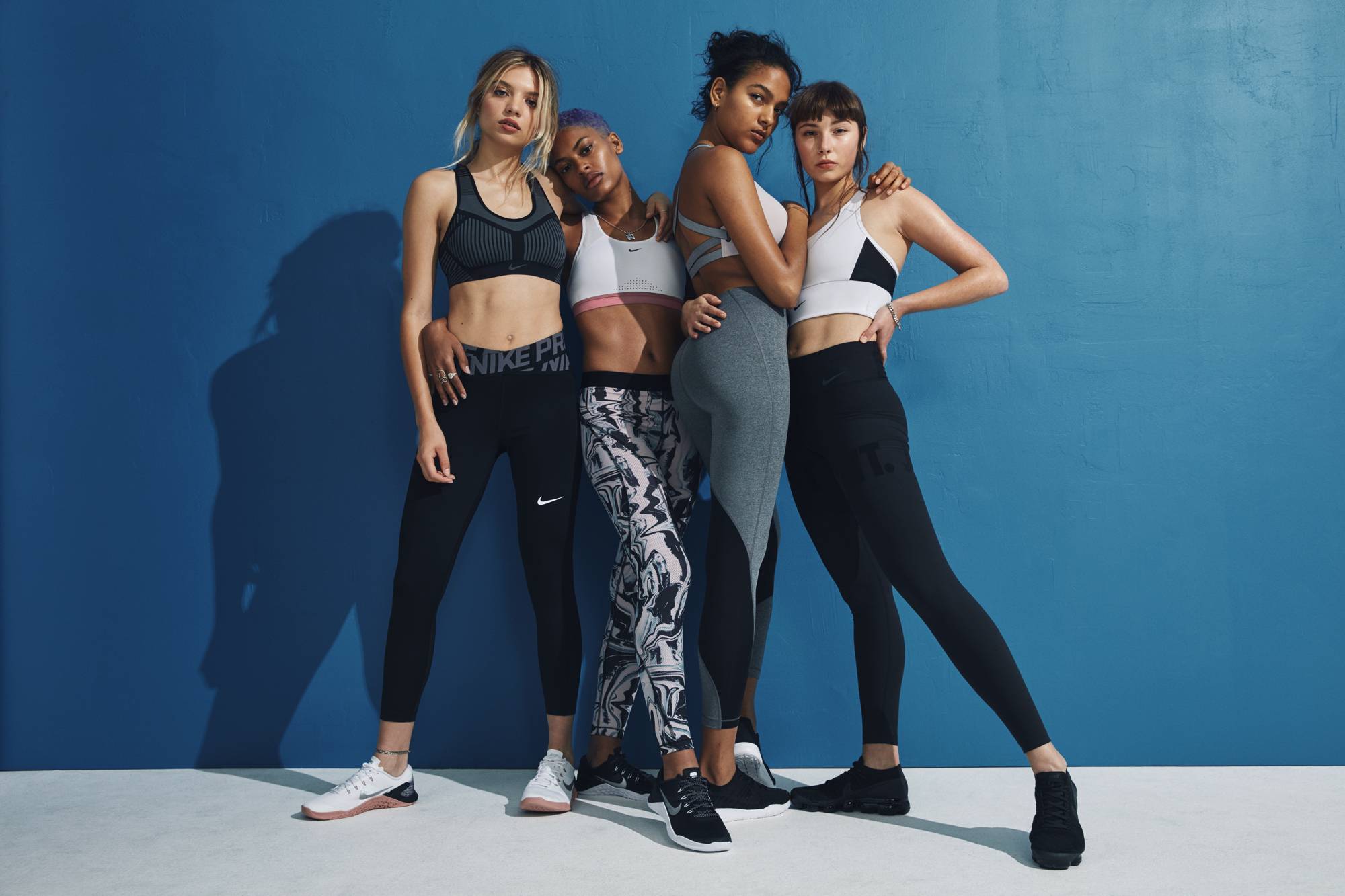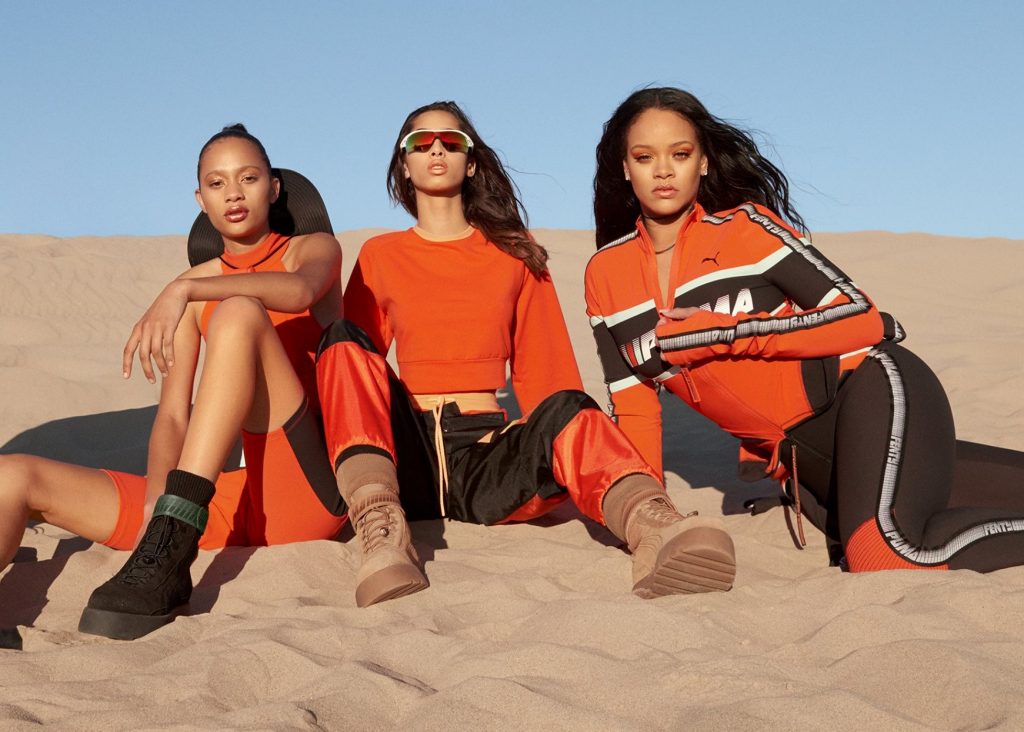Sustainability; it’s the hot fashion word of 2019 and one I’m definitely on-board with.
With a lot of brands, whether by choice or PR, going down the more ethical route, sports brands are having a moment. Sports brands have a lot to answer for, with a multitude of historical environmental issues, from synthetic materials contributing to microfiber waste to toxic dyes polluting water.
Any global apparel brand making strides to be more environmentally friendly is applaudable and should be happening now; yet is it possible? The below goes through the major steps that Nike, Adidas, Reebok, and Puma are taking to become more ethical and sustainable.


Nike
The superpower shoe brand that was once known for sweatshops and unethical factories, is attempting to change its image. The brand has a significant global influence; with a worldwide value of 32.4 billion U.S. dollars (25 pairs of shoes a minute appaza). How has the brand been greening up its image?
“We’re committed to creating a better, more sustainable future for our people, planet and communities through the power of sport.”
Governance
- Nike has a global sustainability team
- The brand joined the UN Climate Change and Fashion Industry for Climate Action in 2019
- Partnered with Ellen MacArthur Foundation (EMF) on Circular Fibres Initiative and more business models to reduce waste
- Nike have a sustainability program for head offices, including composting and recycling at work (everyone should have this FYI)
- Member of the Sustainable Apparel Coalition
Materials
- Use some recycled materials, such as Converse Renew Canvas (recycled PET and denim)
- Reuse-A-Shoe: A recycling program that grinds up old shoes (Nike Grind) to make community spaces, up to 32 million pairs of shoes have been collected so far! If you are in North America or the US, find your store drop-in here.
- Nike created a Circular Design Guide, which suggests ways to transition to a circular economy for designers, no word on efficiency yet
- In 2017, Nike invented a Flyleather made from 50% recycled leather from discarded floor fibers from tanneries
- 32 billion liters of water were saved by sourcing sustainable cotton
- Nike is phasing out PFC-based finishes by 2021
- Use Materials Sustainability Index (MSI) to score energy, waste and chemical use on a product
Manufacturing
- Set a target to source 100% renewable energy across all operations by 2025 (currently at 75%)
- 99.9% of manufacturing waste from footwear was recycled or turned into energy in the final quarter of 2018
- Nike claims to incentivise suppliers to improve sustainability performance
- Use Footwear Sustainability Index and Apparel Sustainability Index (ASI)
- More than half of footwear factory waste is recycled
- Reuse the cardboard from shipping and looking into alternative packaging
Criticisms
- Good On You rates Nike with ‘It’s a Start’ on environmental impact
- Labour Conditions are rated as ‘Not Good Enough’
- Greenpeace heavily criticises Nike’s use of hazardous chemicals in apparel, polluting waters and is bad for workers and people that wear
- Nike still uses polyester and is yet to address the issues of microfiber plastic from textiles polluting the ocean (this is also a very complex issue)
- No info on leather, wool and down

Adidas
Adidas has been around since the 1940s, well known for sports apparel and footwear. The global corporation is based in Europe and the second-largest sportswear manufacturer in the world. The Adidas Group also owns the sports brand Reebok and several other brands. In 2018, the revenue was reported at €21.9 billion. They clearly have the money and reach to make a significant environmental impact.
“…for sport to change lives, it needs a space to exist, a field to play on, an ocean to surf or a mountain to climb – and these spaces are increasingly endangered due to man-made issues including human rights violations, pollution, growing energy consumption and waste”
Governance
- Partnered with Parley on a large ocean plastic campaign and development of a strategy for marine plastic pollution (Avoid, Intercept and Redesign)
- Sustainability roadmap for 2020 with a global sustainability team of 70 people
- Set context-based targets
- Rated ‘Good’ on Environmental Impact by Good On You
- Member of the Sustainable Apparel Coalition
- 2018 Australian Fashion Report gave Adidas an A- grade based on ethics
Materials
- Adidas X Parley Collection uses up to 75% upcycling ocean plastic trash and still maintains performance
- Dry-dye technology introduced by Adidas in 2012 uses 50% less chemicals and energy in fabric dyeing
- 100% sustainable cotton through the Better Cotton Initiative (BCI)
- Rolling out a global product take-back program
Manufacturing
- Designs shoes with 95% pattern efficiency ie 5% waste
- Transitioning to clean energy (20% energy saving at strategic suppliers)
- 50% waste diversion for operations to reduce landfill by 2020
- 100% sustainable input chemistry ie no hazardous chemical by 2020, also part of Bluesign
- 20% water savings at supply by 2020
- Working with suppliers to reduce emissions (no formal target)
Criticisms
- No info on leather, wool and down
- Still uses unsustainable polyester materials which contribute to microfiber pollution (need for alternatives for performance wear)
- Still produce fast fashion – large volume of clothing
- Good On You encourages Adidas to take up science-based targets

Reebok
This English footwear brand is well known for sneakers, but also sell sportswear and clothing. It started in the 1950s in the UK, since purchased by the Adidas Group. Even though the companies are subsidiaries, they operate as separate brands, however, the sustainability practices are parallel.
Governance
- The team behind governing Adidas are also supporting Reebok, meaning that the brand is also a member of the Sustainable Apparel Coalition and Bluesign
Materials
- Aiming to implement a recycling program (with Adidas)
- Launched a sneaker in 2018 made from cotton and corn
Manufacturing
- 15% emission reduction by 2020
Criticisms
- No supply chain specific emission targets
- No info on leather sources

PUMA
PUMA, well known for its casual sneakers, was founded by the brother of the Adidas founder in the 1940s. The brand is now headquartered in Paris, France and is worth around $5.2 billion.
“Sustainability is a key value of PUMA, deeply integrated in our business operations. It guides our company to work faster toward a more just and sustainable future.”
Governance
- Implemented 10 targets for 2020 (10 for 20) covering environmental and ethical practices – these are science-based targets for both supply chains and offices
- Aiming to publish Environmental Profit and Loss Account regularly, which incorporates cost to society from environmental impact
- Measure water consumption, water pollution, waste, air pollution, greenhouse gas emissions, land use
- Yearly conferences on key sustainability issues for PUMA with private organisations such as Harvard University
- Guidance from UN Global Impact
- Environmental impact has decreased by 13% since 2013
Materials
- Part of Better Cotton Initiative, Leather Working Group, Responsible Down Standard and Bluesign
- Aiming for 90% sustainable material by 2020
Manufacturing
- Phased out PFC and remaining restricted substances below 3%
- Supplier training on anti-corruption at 93%
- Signed the Detox Commitment
Criticisms
- Still a fast fashion brand with large volumes of stock
- It’s environmental profit and loss recordings are not 100% accurate and leave gaps
- Not clear how much raw material is used


